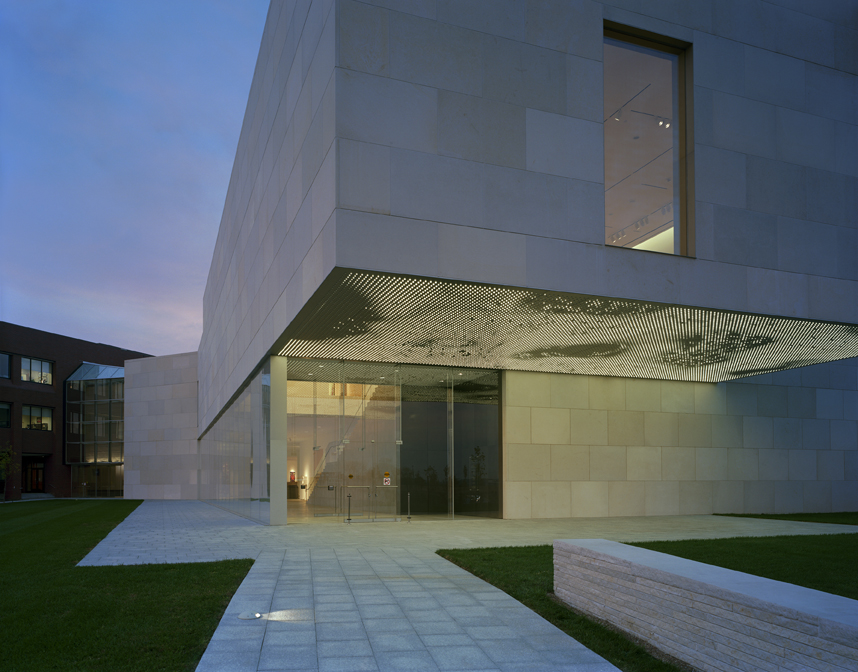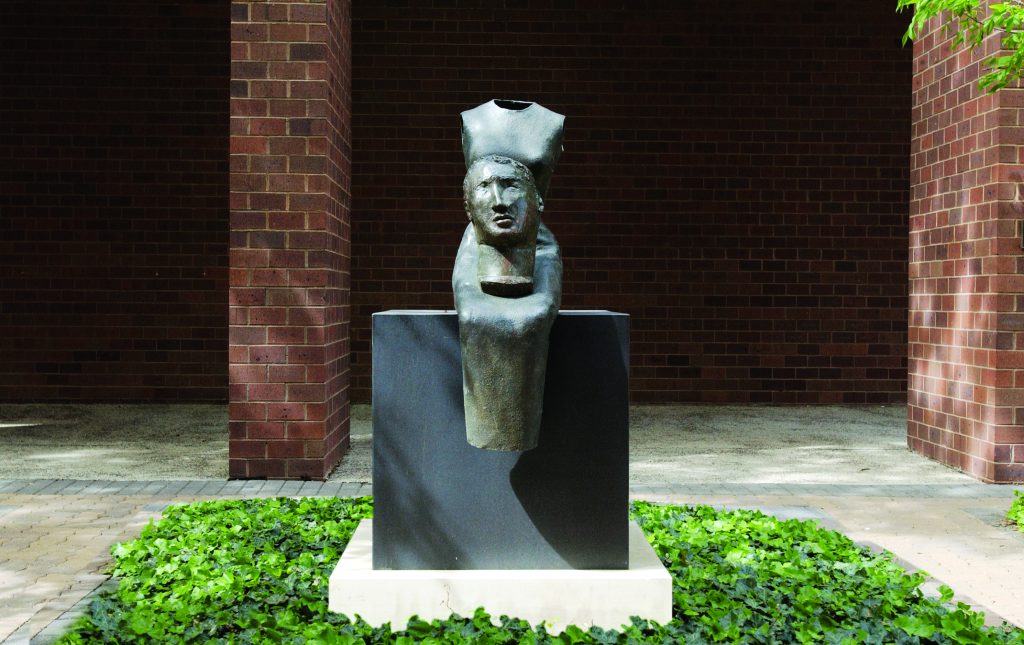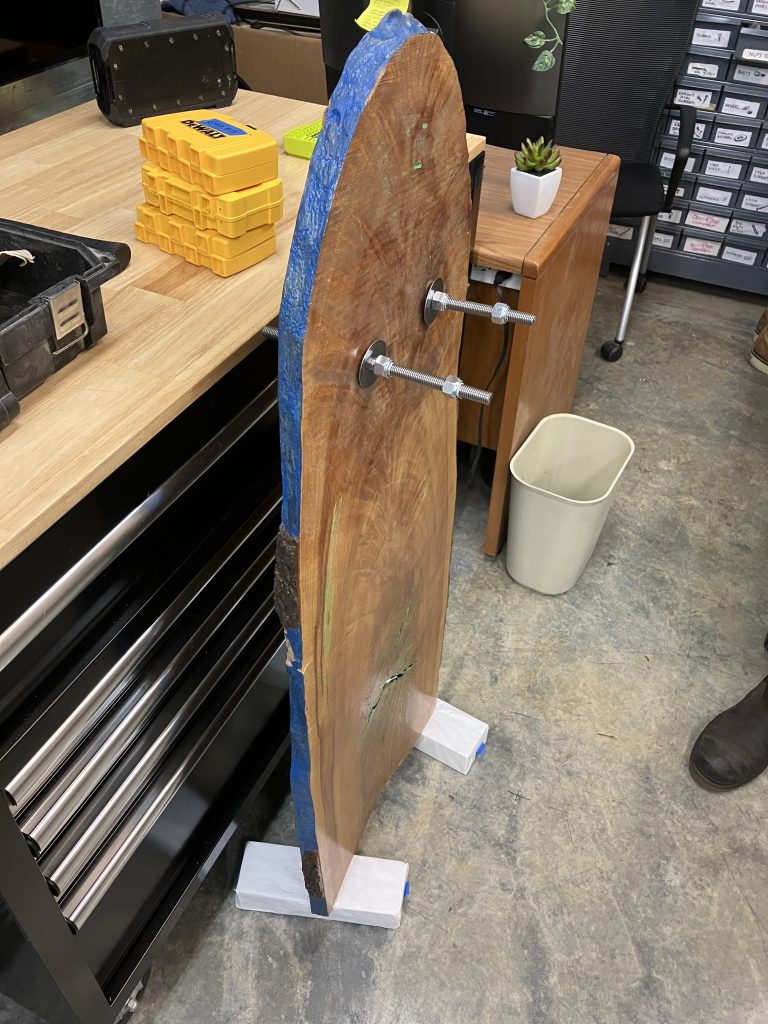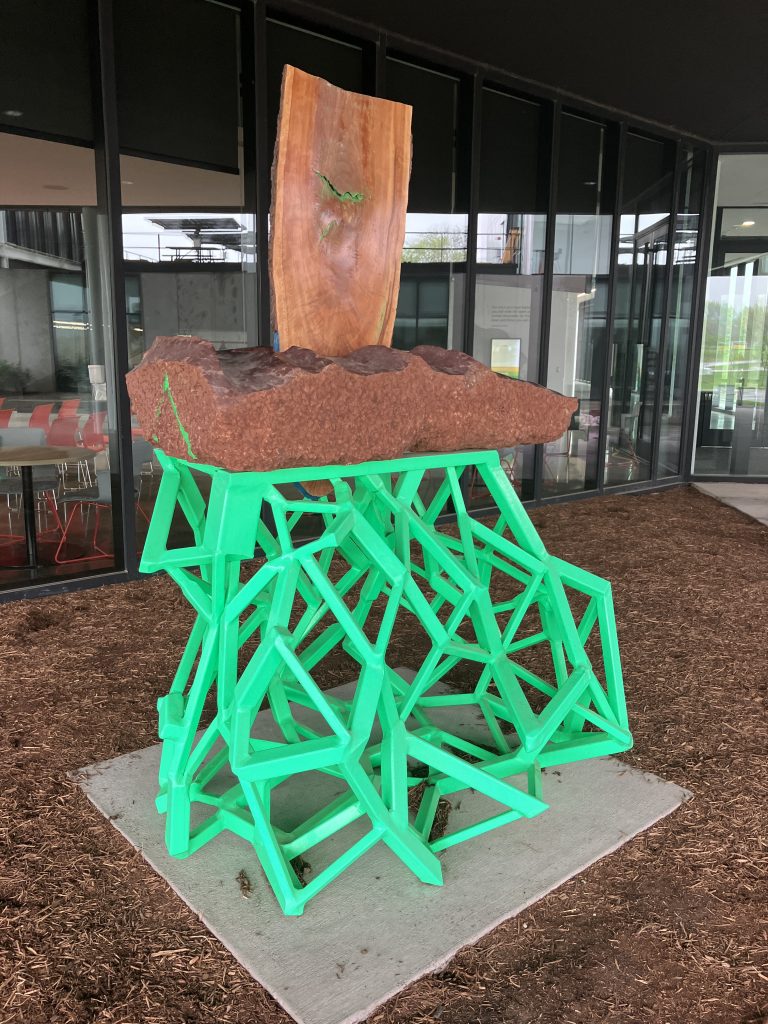We are so excited to have the Leo Villareal sculpture Microcosm re-illuminated!
Microcosm (2007) by Leo Villareal is a site-specific permanent installation. It consists of thousands of white LEDs, custom software, electrical wiring and hardware. It was re-illuminated in April 2025 after a years-long effort to completely restore the work.
Fusing art and technology, Leo Villareal’s Microcosm is part of the cantilevered entrance of the Nerman Museum of Contemporary Art. The artwork’s 60,000 light-emitting diodes (LEDs) shift and swirl to create countless patterns dictated by a computer program created by the artist: “I create the conditions and see what interesting things happen,” Villareal says. “There is never the exact same repetition of patterns.”
This extraordinary union of art and architecture came together before the museum even opened the doors in 2007. Villareal and his team worked with Kyu Sung Woo Architects and J.E. Dunn Construction during the construction of the building to install the work.
“The LED is a remarkable piece of technology, allowing limitless possibilities in light sculptures,” Villareal said. He writes code, based on an old game program (John Conway’s Game of Life), and uses formulae to vary the parameters for the light. Even under the prescribed conditions, the movement constantly changes. “Even though you might recognize a sequence of lights, there is always a variation in its velocity or the number of times it is repeated.”
Villareal is inspired by rules, chaos theory and nature, where small particles build together and then break apart like ocean waves crashing against land. Similarly in his installations, light fractals cluster together, then diminish and eventually disappear. “Light has a primal effect. I hope the work captures people’s attention, then as they look at it longer, they see more and more in it. People will have different experiences with the piece. They will see it very legibly from the road, and as they approach the front of the museum, they will see it at different scales. I want the piece to give the museum a sense of life and animation. I want it to give the sense that something exciting is going on inside the building.”
In addition to the Nerman Museum’s piece, Villareal has a permanent installation in the National Gallery of Art, Washington, D.C., and has installed temporary pieces worldwide including on the Golden Gate Bridge in San Francisco and on 15 bridges spanning the Thames in London. His sculpture, Fountain (KCI) 2023, is prominently featured at the Kansas City Airport.
Leo Villareal received a BA from Yale University in 1990, and an MPS from Tisch School of the Arts, New York University in 1994.




